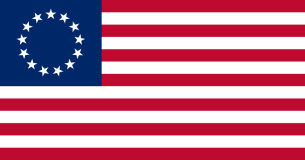All right, kids. It’s time for a pop quiz. Don’t panic. It’s not about the title’s grammar.
This will simply be used as a diagnostic tool for the lesson to follow.
1. What is this?
Unless you’re a historian specializing in the Civil War or a park ranger at Fort Jackson, I bet you’re wrong.
Really.
You think you know, but you don’t. Almost everyone said, “the Confederate flag.” It isn’t.
This:
is the national flag of the Confederate States of America. Does it look similar to anything you’ve seen before?
That’s not a coincidence. But we’ll return to these flags in a little while. First, I must digress into the reason I started thinking about all this.
I have a friend who teaches in a public high school, and if you ever wonder why there are serious problems in American education, just consider the story she told me about the start of this year. Teachers return to school before students in the fall for a series of informational and instructional meetings. One had to do with creating a classroom environment that does not make anyone feel uncomfortable. They told her that if one student wears a t-shirt or belt buckle displaying, among other examples, “the Confederate flag,”
[See? School officials don’t know any more than you do.]
and another student feels offended, the teacher is responsible for creating a hostile classroom environment by not requiring the flag bearer to remove the offending symbol.
Later, she went to a different meeting, this one about the right of students to “political speech.” They told her that if a student wears “the Confederate flag”
[They still don’t know.]
and she makes him remove it, she has violated the flag bearer’s first amendment rights that the Supreme Court affirmed in Tinker v. DesMoines.
So she is wrong, no matter what she does, and the students are the ones who referee the actions of the teacher. Judge the sanity of this for yourself. [Digression over.]
Most citizens of the South during the Civil War thought that they were the true descendants of the United States that the founding fathers created. From a perfectly logical point of view, this makes sense. In 1776, Adams, Jefferson, and Washington conducted a revolution against a distant powerful government in London that took away their money through taxes that the colonists did not have the vote to approve. In 1860, Davis, Chestnut, and Lee conducted a revolution against a powerful central government in Washington which they believed intended to take away their ability to make money by keeping slaves, by executive order of a president they had not voted to elect. If you think there is a great difference, remember how many founding fathers owned slaves. So it should come as no surprise that the Confederate flag resembled the American flag:
At the beginning of the Civil War, Confederate troops flew the CSA national flag in battles such as First Manassas. Imagine being a young, ill-trained soldier in the chaos and fury of combat for the first time, and the stress you would feel. It would be easy to confuse the American and Confederate flags and run toward the wrong lines or attack the wrong side. [To add to the confusion, both sides wore blue uniforms in the early stages of the war.] So the CSA looked for an alternate flag to rally their troops in battles. They adapted a Confederate naval jack:
which was less likely to cause confusion. So what everyone calls “the Confederate flag” does not, and never did, represent a nation or a founding philosophy. It stands for armed resistance to United States authority.
So why would people display this symbol today? They would claim they are yearning for a lost culture or way of life, but if they really knew their history, that would mean flying the CSA national flag. You and I both know that the use of the battle flag is an attempt to provoke a reaction in others, and to defy authority, while cowardly hiding behind Constitutional protections.
So the question really becomes, should the United States protect political speech that is made in ignorance? Is a person’s expression legitimate if he has no idea what he is really saying? The Supreme Court has also ruled that fighting words, ones likely to cause a violent reaction in someone else, are not protected.
I bet these folks would know the difference:



